While all types of lentils share the quality of being fiber-rich and chock-full of protein, there are some differences between them. Features like color, flavor, and texture distinguish lentil varieties.
There are 4 main categories of lentils, and there are many varieties under each category. In this article, we’ll cover the different categories and discuss some different varieties of lentils.
Table of Contents
Types of Lentils
Brown Lentils
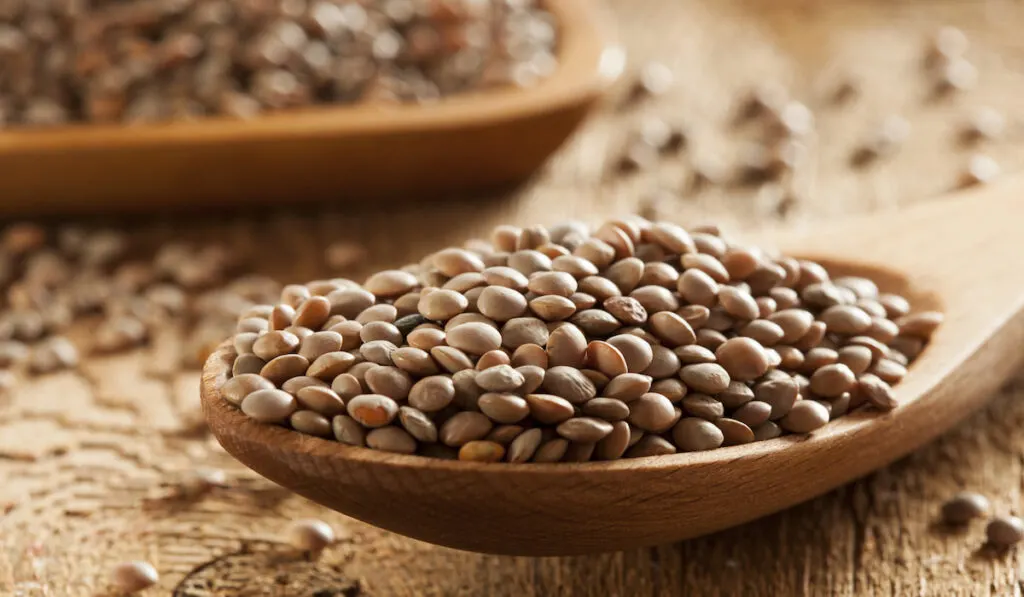
Brown lentils are the most common and widely used type of lentils. They are easy to find and are available at local grocery stores.
Brown lentils come in different shades of brown, ranging from light brown to dark brown. They have a mild earthy flavor, and it takes about 20-30 minutes to cook them.
Brown lentils do not easily lose their shape during cooking. This makes them ideal for stews, warm salads, casseroles, and soups.
You can also add brown lentils to your vegetarian meatloaf or veggie burger.
Aside from their protein and fiber content, brown lentils are a good source of vitamin B, calcium, iron, and phosphorous. So, if you are health-conscious, you should give them a try.
Green Lentils
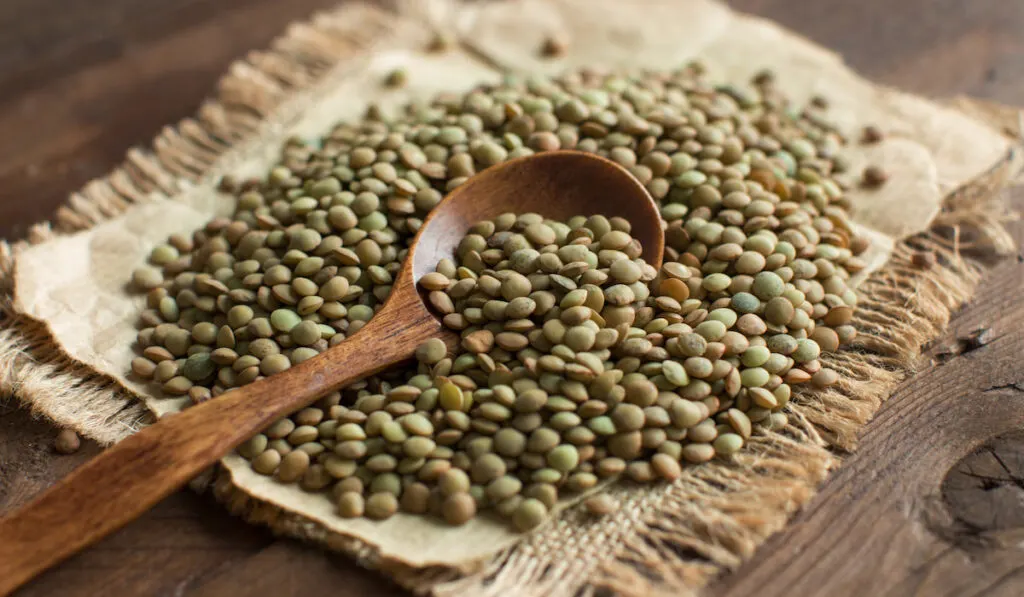
Green lentils are the toughest type of lentils. They come in various shades, ranging from a pale or spotted green color to a bright green color. Green lentils have a dish-like or flat shape.
Unlike brown lentils, green lentils have a robust, peppery flavor. It takes around 35-45 minutes to cook them, but you can soak them for a few hours to shorten your cooking time.
Despite how long it takes to cook green lentils, they still maintain their shape and texture. This makes them ideal for soups, side dishes, and salads.
Green lentils are rich in iron, antioxidants, and magnesium. They are also a good substitute for French Puy lentils.
Red Lentils
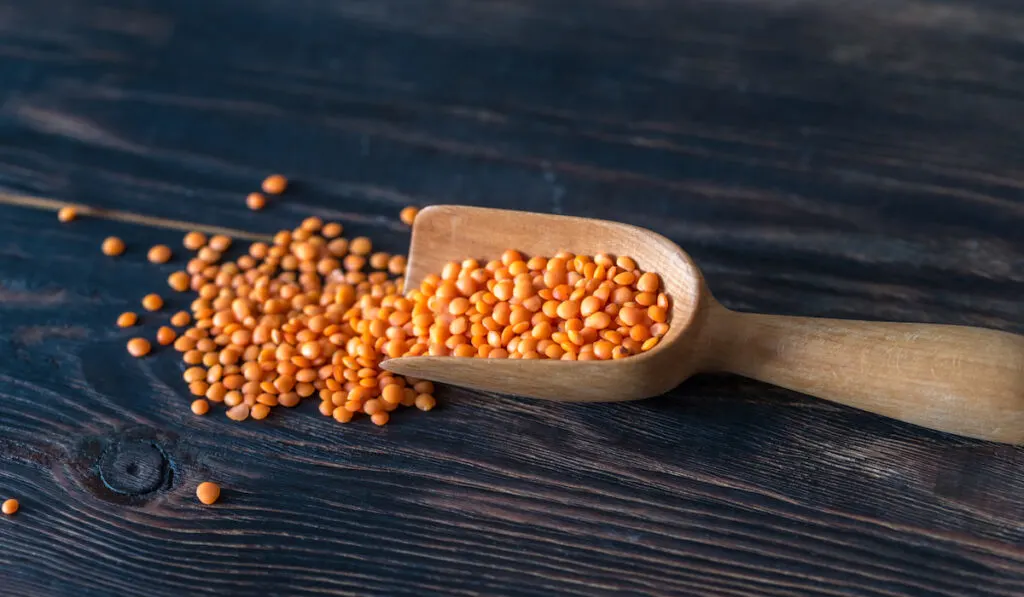
Red lentils are not as common as brown or green lentils, but they’re still pretty easy to find. Although they are called red lentils, they come in a variety of colors including, orange, yellow and pink.
Red lentils have a distinct nutty and sweet flavor which makes them stand out. They also cook quickly, needing about 15-30 minutes of cooking time. You do not have to soak red lentils before you cook them.
Once cooked, red lentils lose their shape and become mushy. This makes them ideal for curries, soups, dips, stews, and other dishes. You can also pair red lentils with roasted veggies or eat them as is. Red lentils are a good source of fiber, vitamin B, and iron.
Specialty Lentils
There are various specialty lentils. However, black lentils and French green lentils are the most common.
Black Lentils
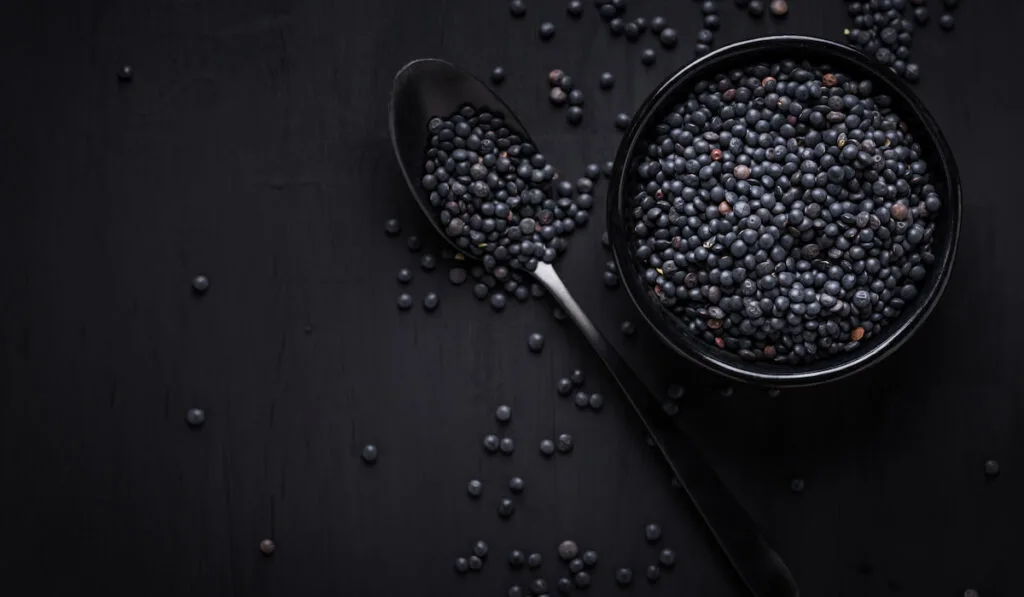
Black lentils, also known as Beluga lentils, are tiny, round, and dark-colored lentils with thick skins. They are not as common as other lentils varieties and can only be grown in cool, dry climates. They are expensive but nutritious.
Black lentils have a strong, earthy flavor, which gets compared to black beans. They are excellent in salads, and you can use them as a garnish, puree them, or roast them.
Black lentils take about 25-30 minutes to cook, so soaking them before you cook should help. Despite how long it takes them to cook, they retain their shape and texture after cooking.
Black lentils are rich in a particular nutrient known as anthocyanins. This nutrient is known to suppress inflammation, cancer, and viruses. Anthocyanins also give black lentils their black color.
French Green Lentils
French green lentils or Puy lentils are indigenous to the French region of Le Puy. They tend to be smaller and darker than ordinary green lentils. They are also rarer and more expensive than green lentils.
French green lentils have a rich peppery flavor. When cooked, they retain their shape. This makes them ideal for salads, soups, and side dishes.
Varieties of Lentils
Horse Gram
Horse Gram is a variety of lentils indigenous to certain parts of Southeast Asia. It has the highest amount of protein amongst lentils.
In Hindi, Horse Gram is known as Kulthi, while in Tamil, it is called Kollu. It is extremely hardy and drought-resistant. This makes it an important food staple.
Horse Gram has a distinct flavor and unique texture that makes it ideal for dals, soups, curries, and stir-fries. You can also roast the seeds, mix them with other herbs, then grind them into a fine powder.
Before cooking Horse Gram, you may need to soak it to shorten your cooking time.
Horse Gram is commonly used to feed cows and horses. However, people can still consume it due to its abundant nutrients. Not only does it serve as a good source of protein, but it also contains vitamin C, iron, and phosphorous.
Masoor Dal

Masoor Dal is a split lentil variety commonly used in Indian cuisines. It typically has an earthy red color. However, it may also be yellow, green, black, brown, and reddish-orange.
Due to its high nutritional value, this lentil is popular in several parts of the world, especially in India.
Masoor Dal cooks quickly and does not require any soaking before cooking since it is a soft dal. When cooked, it changes to a bright golden color.
Masoor Dal has a pleasant earthy flavor, making it ideal for various recipes – curries being the most popular. It is rich in vitamin B1, protein, fiber, amino acids, iron, and potassium. It also helps regulate sugar levels and lower cholesterol.
Green Moong
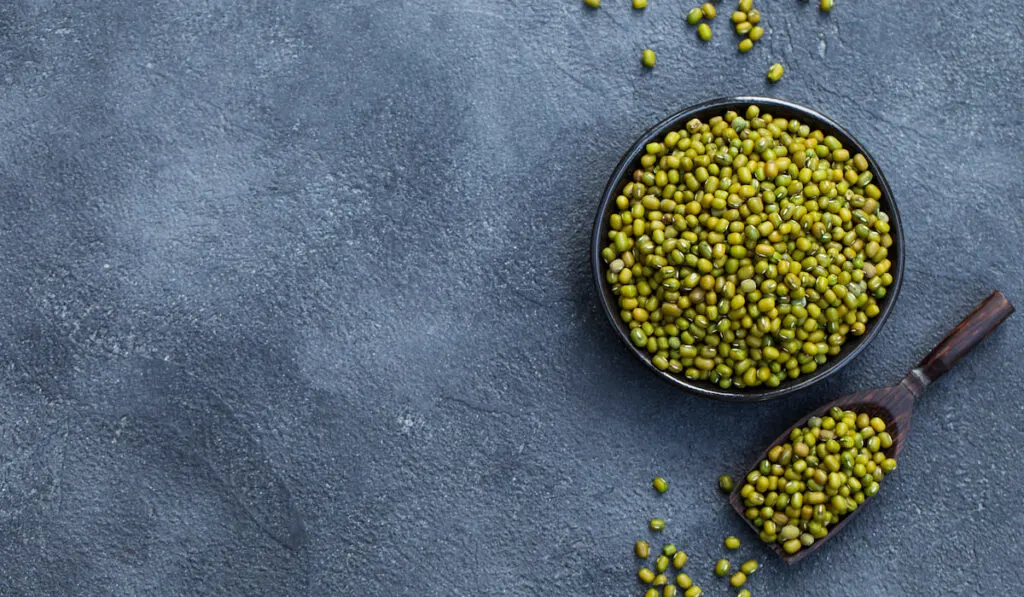
Green Moong or Green Gram is a popular lentil native to the United States and Asia. It is a healthy source of plant protein available with skin on, removed, split, or whole. You can easily find this lentil at any store.
Green Moongs are tiny, round, and olive-green with a mild earthy flavor. You can enhance their flavor by combining them with different ingredients such as fritters, dal, chilla, khichdi, handvo, or dosa.
Before using Green Moong to cook, ensure you soak it for 3-4 hours. Soaking makes cooking easier and shorter. The usual 30 minutes cooking time is lessened.
Green Moong is a good source of dietary fiber, manganese, zinc, potassium, copper, folate, and vitamin B.
Urad Dal
Urad Dal, also known as black lentil or Black Gram, is a lentil that grows mainly in India. It can be whole skinless, whole with skin, split without skin, or split with skin.
When it is whole, it is called Black Gram. But when it is skinned or split, it is called White Gram.
Urad Dal, on its own, tastes a little bitter, but with the right combination of spices, the flavor becomes better and bolder.
Urad Dal is a good source of protein. It also helps to regulate cholesterol and improve digestion.
Toor or Arhar Dal

Toor or Arhar Dal, also known as Pigeon Pea, is a popular ingredient in Indian cuisine. Although this yellow lentil has different names, Arhar Dal and Toor Dal are the same.
Toor Dal is a vital ingredient in popular dishes like Puran Poli, South India Sambhar, and Gujarati Dals.
Cooking Toor Dal takes a little longer than Masoor Dal or Moong Dal due to its thick gelatinous consistency. But it is a good source of potassium, iron, calcium, folic acid, magnesium, and vitamin B.
Matar Dal
Matar Dal or Split Peas is a variety of lentils that is not as common as other varieties. It is available in various colors, including yellow and green. It has a hearty, chewy texture with a rich, earthy flavor that blends with hot, tart, and tangy flavors.
When Matar Dal is cooked, it has a mushy texture. In some homes, it is prepared as an evening snack. Recipes that require Matar Dal are some of the easiest to prepare.
Matar Dal is high in dietary fiber and protein. It also contains potassium, manganese, folate, copper, and vitamins B1 and B5.
Lobia
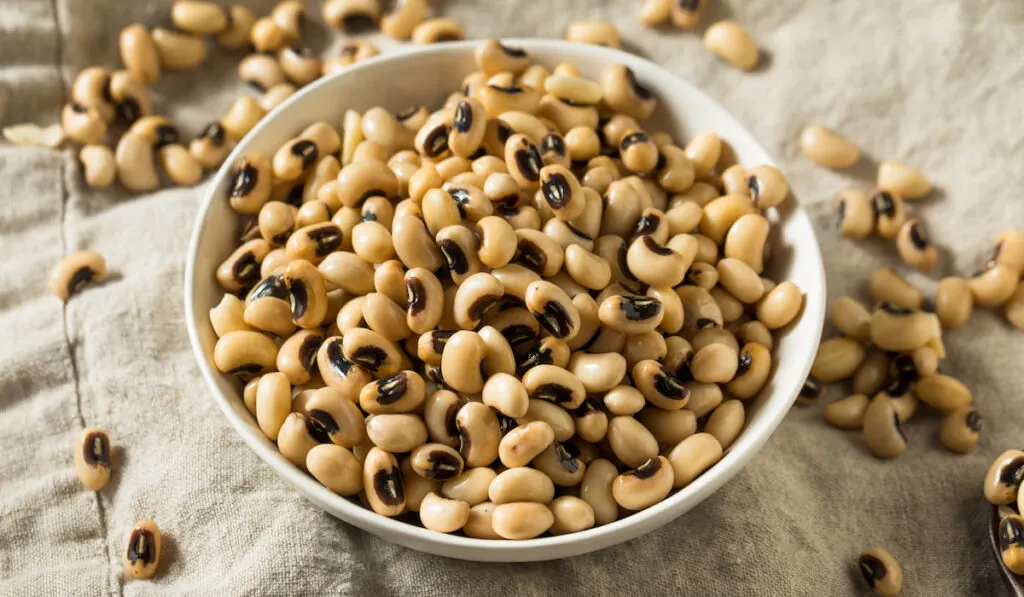
Lobia, also known as black-eyed pea or cowpea, is a textured oval-shaped bean indigenous to Africa. It is also cultivated in southern parts of the United States, Latin America, and Southeast Asia.
The name black-eyed pea comes from the black spot or eye at the center of the bean.
Lobia is available in both fresh and dry forms. You can use it in various recipes, including dals, salads, and soups. The different variants of cowpeas include Red Eye, Light Brown Eye, Purple Eye, Clay, and Cream Chowder.
Although lobia is not as common as chickpeas, it has a high nutritional value. Lobia is rich in fiber and protein. It helps regulate cholesterol levels and is the ideal lentil to incorporate into your diet if you are looking to lose weight.
Laird Lentil
Laird lentil is the first lentil variety licensed in Canada. It is flattened and shaped like a lens and has a green seed coat.
Laird lentils retain their shape after cooking, and they are perfect for soups, salads, and stews. Laird lentils typically cook within 30 to 40 minutes. On cooking, they turn dark brown. So, do not fret when you notice the color change.
Brewer’s Lentil
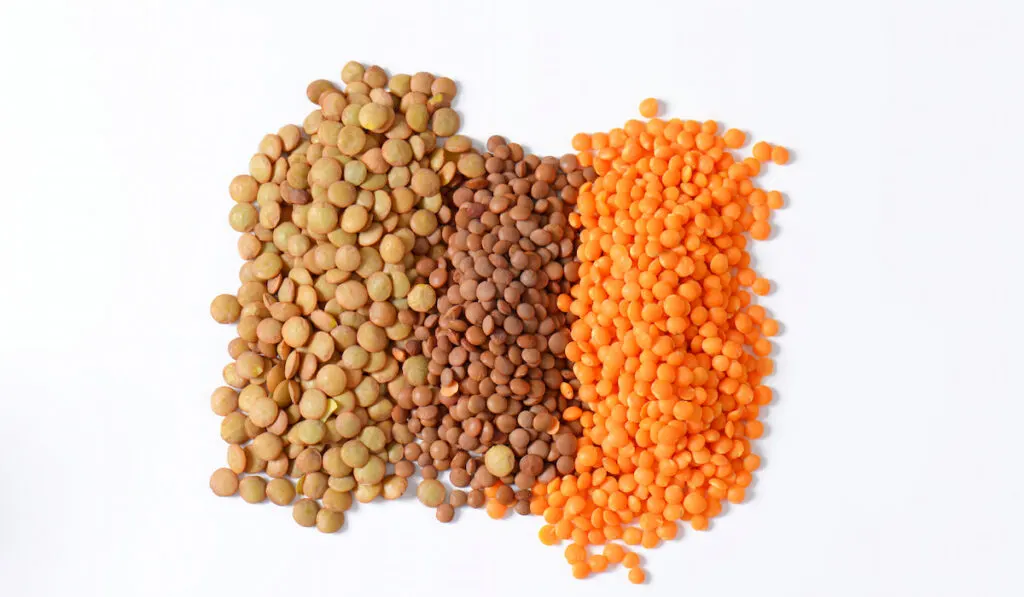
Brewer’s lentil, also known as regular lentil, is the most common in North America. It stands out from other lentils thanks to its mottled khaki color.
Regular lentil has a mild and fairly earthy flavor. It is typically used to make stews and hearty soups. It may also be used to prepare side dishes to be served with pasta and grains.
Brewer’s lentil is considered to have a similar cooking time with rice. And while it retains its shapes even after cooking, you can mash it easily. For this reason, they are perfect for vegetarian burgers and meatloaf.
Resources:
- https://www.bonappetit.com/story/types-of-lentils
- https://www.fix.com/blog/everything-you-need-to-know-about-lentils/
- https://www.homestratosphere.com/types-of-lentils/
- https://asian-recipe.com/different-types-of-lentils-15703
- https://food.ndtv.com/food-drinks/the-dal-glossary-8-types-of-lentils-and-their-benefits-1625287
- https://www.healthline.com/nutrition/horse-gram-for-weight-loss#what-it-is
- https://m.tarladalal.com/glossary-masoor-whole-red-lentil-kala-masoor-301i
- https://www.medicalnewstoday.com/articles/280244
- https://www.foodandspice.com/2011/01/indian-style-yellow-split-pea-curry.html?m=1
- https://www.medindia.net/patients/lifestyleandwellness/lobia-the-hidden-healthy-gem.htm
- https://ohmyveggies.com/a-comprehensive-guide-to-lentils/
- https://cdnsciencepub.com/doi/pdf/10.4141/cjps79-079
- https://myfavouritepastime.com/2016/11/04/what-is-laird-lentil/
